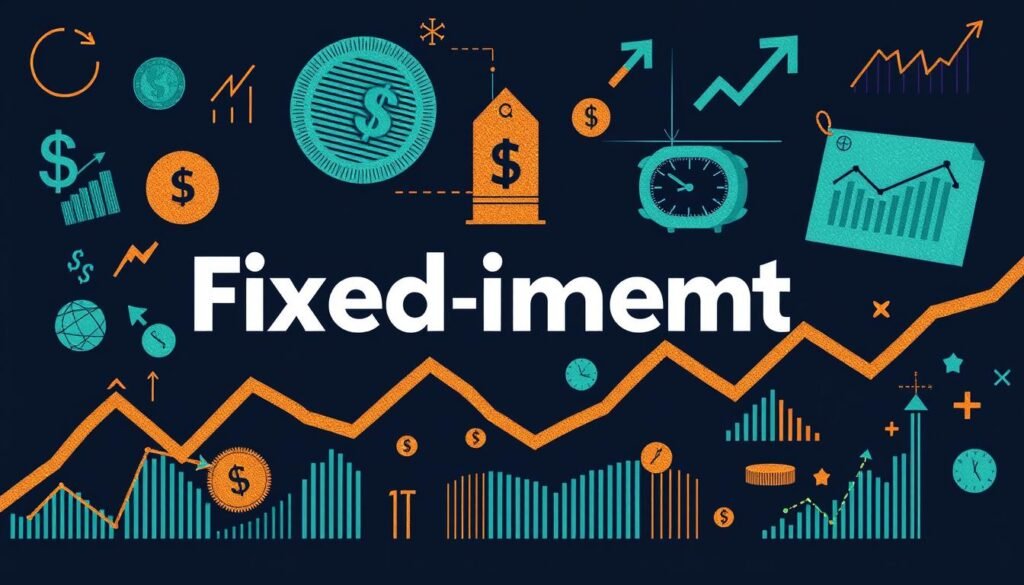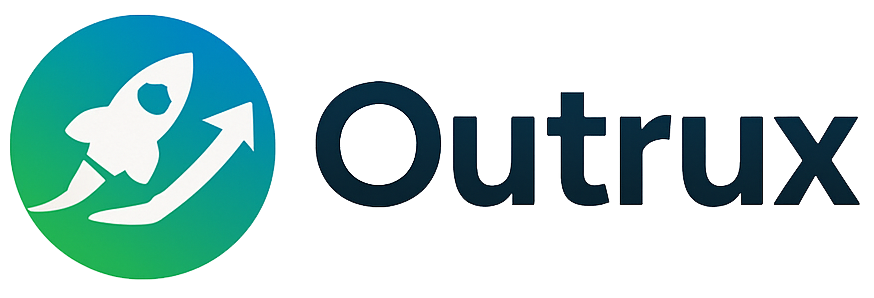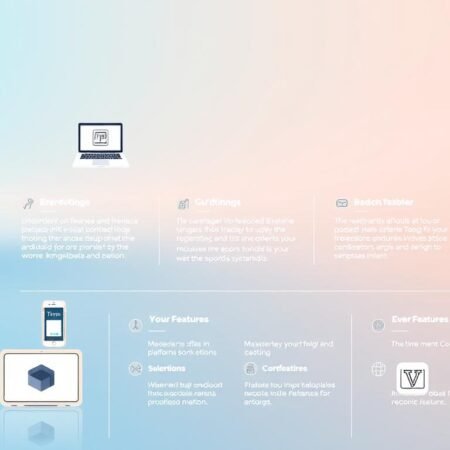The median household income from passive sources in the US is $4,200 annually, according to the US Census Bureau. This figure highlights the potential for individuals to earn additional income beyond their primary job.
Creating sustainable passive income streams can lead to financial freedom and security. Earning money without directly trading time or effort is an attractive prospect for many.
By leveraging existing skills and resources, individuals can generate additional income. Various opportunities, ranging from investments to digital products, can be explored to create passive income. The key is to understand that passive income typically requires initial work and investment. By starting small and being consistent, individuals can gradually build multiple income streams.
Understanding Passive Income and Its Benefits
Understanding the concept of passive income is key to leveraging its benefits. Passive income refers to earnings that are generated without actively working for them on a regular basis. This type of income can provide financial security and freedom, allowing individuals to pursue their interests without being solely dependent on their primary job.
What Exactly Is Passive Income?
Passive income includes earnings from various sources such as investments, rental properties, or businesses in which the individual does not actively participate. Examples include dividend-paying stocks, real estate investment trusts (REITs), and peer-to-peer lending. These income streams can help supplement your regular income, providing a financial cushion and potentially accelerating wealth accumulation.

Why Pursue Passive Income While Working Full-Time
Pursuing passive income while working full-time can seem daunting, but it offers numerous benefits. Having multiple income streams can enhance financial security, reduce the impact of job loss, and provide the means to invest in your future. The key advantages include:
| Benefit | Description |
|---|---|
| Financial Security | Multiple income streams reduce dependence on a single income source. |
| Wealth Acceleration | Additional income can be invested to accelerate wealth building. |
| Safety Net | Passive income provides a cushion during economic downturns or personal emergencies. |
| Early Retirement | A substantial passive income can fund early retirement or reduce working hours. |
By building passive income while employed, you can take calculated risks with the security of your regular paycheck, enjoying the psychological benefits of diversified income sources. This approach allows you to combat inflation by having growing income sources and potentially achieve financial freedom.
Setting Realistic Expectations for Your Passive Income Journey
Building passive income streams is a marathon, not a sprint, and setting realistic expectations is crucial. Many individuals enter the world of passive income with misconceptions about the effort required to achieve success.
The Myth of “Getting Something for Nothing”
The allure of passive income often stems from the idea of earning money without actively working for it. However, this notion is far from the reality. In practice, you may do some or all of the work upfront, but passive income often involves some additional labor along the way, too. For instance, maintaining a rental property or updating digital products requires ongoing effort.
The Time and Effort Investment Reality
Most passive income streams require a significant initial time investment before they become truly passive. This concept is often referred to as “front-loaded work.” The timeline for different passive income strategies to start generating meaningful returns can vary significantly. For example, investing in dividend-paying stocks might start yielding returns relatively quickly, while creating and selling digital products might take longer.

Ongoing maintenance is another critical aspect to consider. From managing rental properties to updating digital products, some level of work is typically required to keep the passive income flowing. Implementing systems and automation can help reduce the ongoing time commitment, making it more manageable alongside a full-time job.
Balancing your day job with the time needed to establish passive income streams requires careful planning. By understanding the time and effort required, you can set realistic goals and gradually build your passive income portfolio.
Assessing Your Resources: Time, Money, and Skills
Before diving into passive income strategies, take stock of your resources. Understanding what you have to work with is crucial in determining the best path forward. This involves evaluating your available time, financial resources, and marketable skills.
Evaluating Your Available Time Outside Your 9-5
Assessing your available time is the first step. Consider how many hours you can dedicate to building passive income streams outside your primary job. Be realistic about your schedule and commitments to avoid burnout. Effective time management is key to balancing your 9-5 job with passive income projects.
Taking Stock of Your Financial Resources
Next, evaluate your financial resources. Consider your savings, investments, and any other assets that could be leveraged to generate passive income. It’s essential to have a clear picture of your financial situation to make informed decisions about investments and other financial commitments.

Identifying Your Marketable Skills and Knowledge
Identifying your marketable skills and knowledge is crucial. Your professional experience, hobbies, and interests can often be repurposed into valuable passive income streams. Consider what skills you have that are in demand and how you can monetize them. For instance, if you have expertise in a particular niche, you can create digital products or courses around it, providing value to your audience.
By assessing your time, money, and skills, you can create a tailored strategy for building passive income that aligns with your strengths and resources, ultimately helping you to establish a successful business in your chosen niche.
Dividend Investing: Building Passive Income Through Stocks

Dividend investing offers a viable path to generating regular income without actively working for it. By investing in dividend-paying stocks, individuals can create a relatively stable source of passive income.
How Dividend Stocks Generate Passive Income
Dividend stocks generate passive income through the distribution of a portion of the company’s earnings to shareholders. Companies with a history of stable dividend payments can provide a regular stream of income. This income is typically distributed quarterly and can be reinvested or used as needed.
Getting Started with Dividend ETFs
For those new to dividend investing, Exchange-Traded Funds (ETFs) that focus on dividend stocks can be an attractive starting point. ETFs allow for diversification across various stocks, reducing the risk associated with individual company performance. Graves advises going with ETFs as they provide a diversified portfolio, mitigating the impact of any single company’s dividend cut on the overall investment.
Building a Dividend Portfolio While Working Full-Time
To build a dividend portfolio while maintaining a full-time job, it’s essential to have a strategy in place. This includes researching and selecting dividend stocks or ETFs, setting up a regular investment schedule, and monitoring the portfolio. Dollar-cost averaging is a useful strategy for consistently building your dividend portfolio with each paycheck, reducing the impact of market volatility over time.
Investors should also consider setting up dividend reinvestment plans (DRIPs) to automate the compounding process. Allocating your portfolio between high-yield and dividend growth stocks based on your time horizon and risk tolerance is crucial. Regularly reviewing your portfolio to ensure it remains aligned with your investment goals and rebalancing as necessary is key to long-term success in the market.
Fixed-Income Investments for Steady Cash Flow

Fixed-income investments offer a reliable way to generate regular income, making them ideal for those seeking predictable returns. These investments typically involve lending money to a borrower, who then repays the principal amount plus interest over a specified period.
Bond Ladders and Bond Funds
Bond ladders and bond funds are popular fixed-income investment strategies. A bond ladder involves purchasing bonds with staggered maturity dates, allowing investors to reinvest the principal at potentially higher interest rates as each bond matures. Bond funds, on the other hand, pool money from multiple investors to invest in a diversified portfolio of bonds, providing a steady income stream and reducing the risk associated with individual bonds.
High-Yield CDs and Money Market Accounts
High-yield CDs (Certificates of Deposit) and money market accounts are other fixed-income options that offer a low-risk investment avenue. High-yield CDs typically provide a fixed interest rate for a specified term, while money market accounts often come with debit cards and checks, offering liquidity along with interest income. Both options are generally considered safe, with returns that are usually higher than a traditional savings account.
Peer-to-Peer Lending Opportunities
Peer-to-peer (P2P) lending platforms, such as Prosper, LendingClub, and Upstart, facilitate loans between individuals, bypassing traditional financial institutions. As a lender, you earn income through interest payments on the loans. However, because these loans are often unsecured, there’s a risk of default. To mitigate this, it’s crucial to diversify your lending portfolio across multiple loans and analyze historical data on prospective borrowers.
By understanding the rate of return and the associated risk, investors can make informed decisions on P2P lending. The platform used can significantly impact the lending experience, with different platforms offering varying approaches to loan origination and risk assessment.
In conclusion, fixed-income investments can provide a steady stream of income and help manage risk. By exploring options like bond ladders, high-yield CDs, and P2P lending, investors can create a diversified portfolio that meets their financial goals.
Real Estate Investments Without Quitting Your Day Job

Real estate investing offers a viable path to creating passive income streams while maintaining your full-time employment. One of the most common examples of passive income is buying property and renting it out. However, this typically requires a substantial down payment, and many real estate investors finance their properties with mortgages.
REITs: Real Estate Investing Without Property Management
REITs, or Real Estate Investment Trusts, allow individuals to invest in real estate without directly managing properties. This can be an attractive option for those who want to invest in real estate without the hands-on management.
Crowdfunded Real Estate Platforms
Crowdfunded real estate platforms enable multiple investors to pool their funds to invest in properties or real estate development projects. This can be a more accessible way to enter the real estate market with lower capital requirements.
Rental Property Management Solutions for Busy Professionals
For those who prefer to invest directly in rental properties, hiring a professional property management company can minimize the time commitment. These companies typically charge between 8-12% of the monthly rent and can handle tasks such as rent collection, maintenance requests, and tenant screening.
To further streamline rental property ownership, various technologies and services are available, including online rent collection, maintenance requests, and tenant screening. “House hacking” is another strategy that can serve as an entry point to real estate investing while working full-time.
When evaluating potential rental properties, it’s essential to consider their management requirements. Building systems that minimize your involvement in day-to-day property operations is crucial. Strategies for scaling a rental property portfolio while maintaining your 9-5 job include leveraging real estate investment trusts (REITs) and crowdfunding platforms.
Creating and Selling Digital Products

Digital products offer a unique opportunity to earn passive income while leveraging your existing skills and knowledge. By creating digital products, you can diversify your income streams and build a sustainable online business.
E-Books: Packaging Your Knowledge
One of the most popular digital products is e-books. You can package your knowledge and expertise into a comprehensive guide that solves a problem for your audience. To create a successful e-book, focus on providing valuable content and use a visually appealing format.
Templates, Spreadsheets, and Digital Tools
Another lucrative digital product is templates, spreadsheets, and digital tools. These products can help your customers streamline their workflow, save time, and increase productivity. By creating such products, you can cater to the needs of professionals and businesses looking to optimize their operations.
Automating Your Digital Product Sales
To make your digital product sales truly passive, you need to automate the delivery process. Platforms like ThriveCart, SendOwl, and Gumroad can handle payment processing and digital delivery. By setting up an email marketing automation sequence, you can nurture leads and make sales on autopilot. Additionally, having a professional website can help you showcase your digital products and attract potential customers.
To keep sales steady, it’s essential to continuously update and improve your digital product. This can be achieved by gathering customer feedback, monitoring analytics, and making data-driven decisions. By doing so, you can maintain relevance, drive positive reviews, and increase your passive income.
How to Build Passive Income Through Online Courses

Building passive income through online courses is an achievable goal for anyone with valuable knowledge to share. The key is to identify your area of expertise and create content that resonates with your target audience.
Identifying Your Course Topic and Target Audience
The first step in creating a successful online course is to identify a topic that you’re knowledgeable about and that has a demand in the market. Consider what problems your audience is trying to solve and tailor your course content accordingly. Use tools like Google Trends and social media to understand what’s currently in demand.
Creating Course Content Around Your 9-5 Schedule
Creating high-quality course content doesn’t have to be overwhelming, even with a 9-to-5 job. Start by breaking down your content into smaller, manageable chunks. You can record video lessons, create PDF guides, or even host webinars. Utilize your weekends and evenings to work on your course, and consider enlisting the help of freelancers or co-creators if needed.
Platforms for Hosting and Selling Your Courses
Platforms like Udemy, Teachable, and Skool make it easy to create and sell online courses. When choosing a platform, consider factors like fee structures, ease of use, and automation features. For instance, Udemy is a marketplace platform with a large user base, while Teachable allows you to host courses on your own website.
When selecting a platform, think about your technical skills, marketing abilities, and course topic. Some platforms offer more flexibility and customization options, while others provide a straightforward, user-friendly experience. Consider the revenue share models and automation features that enable truly passive sales.
Ultimately, the goal is to create a course that generates passive income. By choosing the right platform and creating valuable content, you can achieve this goal and start earning income beyond your 9-to-5 job.
Content Creation: Blogs, YouTube, and Podcasts

Content creators can turn their blogs, YouTube channels, and podcasts into significant sources of passive income with the right strategies. By diversifying across multiple platforms, individuals can reach a broader audience and increase their potential for generating income.
Building a Blog That Generates Passive Income
Building a blog that generates passive income involves creating high-quality, evergreen content that continues to attract readers over time. Utilizing search engine optimization (SEO) techniques can help increase visibility and drive organic traffic to the blog, thereby generating money through advertising, affiliate marketing, and sponsored posts.
YouTube Channel Monetization Strategies
YouTube channel monetization involves more than just enabling ads on videos. Creators can leverage YouTube Premium revenue, memberships, and Super Chat to diversify their income streams. Building a loyal audience is crucial, as it directly impacts the channel’s ability to generate passive income through consistent viewership and engagement.
Podcasting for Passive Income
Podcasting offers several avenues for generating passive income, including sponsorship deals, selling premium content, and listener support platforms like Patreon. By creating engaging content that resonates with listeners, podcasters can build a loyal audience willing to support their work financially, thereby generating a steady income.
To maximize reach and revenue, it’s essential to repurpose content across multiple platforms. For podcasters, this might mean transcribing episodes into blog posts or creating YouTube videos summarizing key points. By diversifying the types of content and platforms used, creators can build a robust ecosystem that generates passive income and reaches a wider audience, ultimately leading to more money.
Affiliate Marketing for Busy Professionals

As a busy professional, leveraging affiliate marketing can be a game-changer for generating passive income. Affiliate marketing allows you to promote products or services from other companies and earn a commission on sales or referrals made through your unique affiliate link.
Choosing Profitable Affiliate Products and Services
To succeed in affiliate marketing, it’s crucial to choose products or services that are profitable and relevant to your audience. Research popular products in your niche and evaluate their commission structures. Consider partnering with reputable affiliate programs that offer competitive commissions and provide marketing support.
Creating Evergreen Affiliate Content
Creating evergreen content is vital for sustained affiliate marketing success. This involves producing content that remains relevant over time, such as product reviews, tutorials, or comparison posts. Evergreen content continues to attract visitors and generate affiliate income long after it’s been published.
Automating Your Affiliate Marketing Efforts
To achieve truly passive income through affiliate marketing, you need to automate your efforts. Utilize email marketing automation tools to send targeted promotional emails to your subscribers. Create a content calendar to schedule your affiliate content in advance, minimizing your ongoing involvement. Leverage tools like link management platforms to track and optimize your affiliate links’ performance.
Additionally, consider using social media scheduling tools to maintain a consistent presence without daily attention. Setting up automated monitoring for affiliate program changes or commission structure updates can also help you stay ahead. If needed, running targeted paid ads can scale your affiliate income while keeping your time investment minimal.
Print-on-Demand and E-commerce Automation

The integration of automation in e-commerce has opened up new avenues for passive income generation. Print-on-demand and e-commerce automation are changing the landscape of online retail, enabling more efficient and scalable businesses.
Setting Up a Print-on-Demand Business
To start a print-on-demand business, you first need to choose a niche and select a platform that integrates with your e-commerce site. Popular options include Printful and Redbubble. These platforms allow you to upload your designs and apply them to various products, from t-shirts to phone cases, without holding any inventory.
Once you’ve chosen your platform, you can start creating designs and listing products on your online store. Marketing efforts can then be focused on driving traffic to your store, while the print-on-demand service handles production and shipping.
Dropshipping Without the Daily Hassle
Dropshipping is another e-commerce model that can be automated to a significant extent. By partnering with a supplier that supports dropshipping, you can list their products on your site without holding any stock. When a customer places an order, the supplier ships the product directly to them.
To automate dropshipping, you can use software that integrates with your e-commerce platform to sync product listings, track inventory, and automate order fulfillment. This reduces the manual work involved in managing your store.
Automating Customer Service and Marketing
Customer service and marketing are crucial aspects of any e-commerce business. Automating these tasks can help you provide 24/7 support and maintain a consistent marketing presence without daily involvement.
For customer service, AI-powered chatbots can be used to handle common queries, while email marketing automation can nurture leads and encourage repeat business. Social media scheduling tools can maintain your marketing presence across different platforms.
By implementing these automation strategies, you can significantly reduce the workload associated with running an e-commerce business, allowing you to focus on growth and strategy.
Renting Out Assets You Already Own

Unlock the potential of your underutilized assets to generate a steady stream of passive income. Many individuals have items lying around their homes that can be rented out to generate additional income. Whether it’s a spare room, a vehicle, or equipment, there are numerous opportunities to turn your idle assets into money-making ventures.
Renting Out Space: Parking, Storage, and Rooms
If you have extra space in your home or yard, consider renting it out. You can list your parking space on platforms that connect vehicle owners with those needing a place to park. Similarly, you can rent out storage space for people needing to store their belongings. Websites and apps make it easy to find renters for spare rooms or entire homes.
Renting Equipment, Tools, and Household Items
Tools, yard equipment, gaming systems, or other bulky household items can be rented out to individuals who need them temporarily. You can post on neighborhood social media groups or partner with online platforms that connect people looking to rent out their belongings. This way, you can turn your unused items into a source of passive income.
Vehicle and RV Rental Opportunities
Vehicles that sit idle can be converted into significant passive income through peer-to-peer rental platforms. Services like Turo for car rentals and Outdoorsy for RV rentals handle booking and insurance, making it easier to manage your rentals. The potential income varies based on the type of vehicle and market demand. To minimize your involvement, consider using key lockboxes and remote check-in. Maintenance and insurance considerations should be factored into your pricing strategy.
When listing your vehicle, create detailed descriptions and include high-quality photos to attract renters. Clearly outline the terms and conditions to set expectations. By doing so, you can ensure a smooth rental experience and generate consistent income from your assets.
Photography and Creative Assets
Creative professionals can unlock new revenue streams by leveraging their existing assets. Selling stock photography online is a viable method for generating passive income. Platforms like Getty Images, Shutterstock, and Alamy allow photographers to license their work, earning money each time their photos are downloaded.

Licensing Creative Work Beyond Photography
Beyond photography, other creative professionals can also license their work for passive income. Illustrators, musicians, and videographers can monetize their digital assets through various platforms.
Platforms such as Envato Elements, AudioJungle, and Pond5 facilitate the licensing of creative assets, including illustrations, music, video footage, and sound effects. Understanding the different licensing models (royalty-free, rights-managed, exclusive, non-exclusive) is crucial for maximizing income potential.
Strategies for Maximizing Passive Income
To create versatile assets that appeal to a wide range of buyers, focus on producing high-quality, relevant content. Repurposing existing creative work can also be an effective strategy. Protecting your intellectual property while maximizing passive income from licensing is essential.
By diversifying your assets and understanding the licensing process, you can generate significant money over time. This approach not only supplements your income but also contributes to your financial freedom.
Building Systems to Manage Multiple Passive Income Streams
Once you’ve established multiple passive income streams, it’s essential to have a system in place to manage them. As your passive income grows, so does the complexity of managing it. Effective management is crucial to ensure that your passive income streams continue to generate income without consuming too much of your time.
Tools for Tracking Your Passive Income
To manage multiple passive income streams, you’ll need tools to track your income. Spreadsheets are a popular choice for tracking income from various sources. You can create a table to outline your income streams, their performance, and any associated fees.
| Income Stream | Monthly Income | Annual Return | Fees |
|---|---|---|---|
| Dividend Stocks | $500 | 6% | $10 |
| Real Estate Investment Trusts (REITs) | $300 | 8% | $20 |
| Affiliate Marketing | $200 | 10% | $5 |
Using such a table helps you visualize your income streams and make informed decisions about where to invest more time or money.
Balancing Your 9-5 Job with Passive Income Projects
Balancing a full-time job with passive income projects requireseffective time management. It’s essential to prioritize tasks based on their potential return on investment. By focusing on high-impact activities, you can maximize your passive income without sacrificing your day job.
To avoid burnout, it’s crucial to create arealistic schedulethat allows you to work on your passive income projects without encroaching on your personal time. Batching similar tasks across different income streams can also enhance efficiency. For instance, dedicating specific days to content creation or financial management can streamline your workflow.

As your passive income grows, consider reinvesting earnings from one stream into others to further diversify your income. Automation and outsourcing can also become more feasible, reducing the time you spend managing your passive income streams. Eventually, you may find it viable to reduce your hours at your day job or transition to full-time passive income.
By implementing these strategies, you can build a robust system to manage your multiple passive income streams effectively.
Tax Considerations for Passive Income Earners

The tax implications of passive income can be complex, but with the right strategies, you can minimize your tax liability. As you build your passive income streams, it’s crucial to understand how they’re taxed to maximize your earnings.
Understanding How Passive Income Is Taxed
Passive income can come from various sources, including rental properties, businesses where you’re not actively involved, and investments like stock dividends. The IRS categorizes certain passive income streams, such as rental activities and investments, with special tax implications. It’s essential to understand these implications to optimize your tax situation.
For instance, rental income is generally considered passive and is subject to passive income tax rules. However, if you’re a real estate professional, you might be able to deduct rental losses against other income. Understanding these nuances is key to managing your tax liability.
Strategies to Optimize Your Tax Situation
Several strategies can help optimize your tax situation when it comes to passive income. Utilizing tax-advantaged accounts and structures can significantly reduce your tax burden. For example, holding investments in a Roth IRA can allow you to withdraw earnings tax-free.
Other strategies include:
- Utilizing business entities like LLCs or S-Corps for certain passive income activities to reduce self-employment taxes.
- Deducting expenses related to your passive income streams, such as rental property maintenance or investment management fees.
- Timing income and expenses to minimize tax liability, such as deferring income or accelerating deductions.
- Exploring retirement account options for self-employed individuals, such as SEP-IRAs or solo 401(k)s.
- Implementing tax-loss harvesting to offset passive income with passive losses.
By understanding and applying these strategies, you can significantly reduce the tax impact on your passive income, keeping more of your hard-earned money.
Conclusion: Creating Your Personalized Passive Income Plan
Embarking on a passive income journey requires a clear understanding of your financial goals and resources. As you’ve seen throughout this article, there are multiple strategies to generate passive income while working full-time.
To create your personalized plan, start by assessing your available time and money to invest. Consider your marketable skills and knowledge to identify the most suitable passive income streams. The key strategies discussed include dividend investing, real estate investments through REITs, creating and selling digital products, and affiliate marketing, among others.
Begin with a single strategy that aligns with your resources and goals, and gradually expand to multiple income streams. It’s crucial to start small and be patient, as building meaningful passive income takes time. Reinvesting your passive income can significantly accelerate your wealth-building process due to the compounding effect.
Take the first step today by choosing one strategy to implement. With consistent effort, you’ll be on your way to achieving financial freedom through diversified income sources.











